CVA FINALS STUDY GUIDE
1/19
There's no tags or description
Looks like no tags are added yet.
Name | Mastery | Learn | Test | Matching | Spaced |
|---|
No study sessions yet.
20 Terms
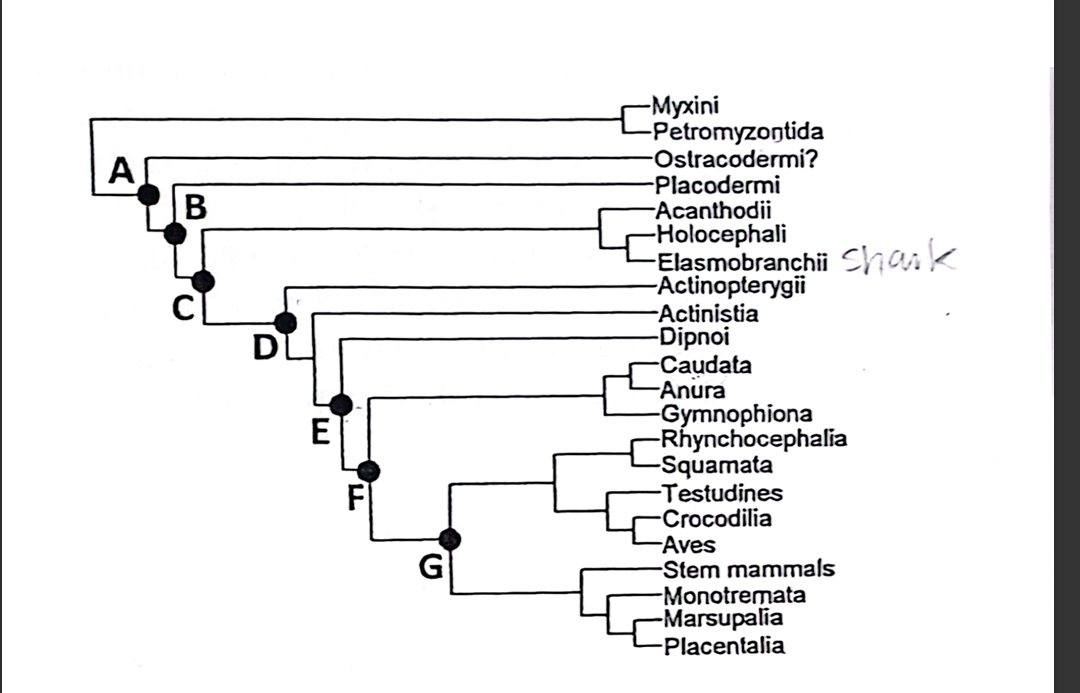
Identify the SPLITS defined by the presence or absence of a jaw
A
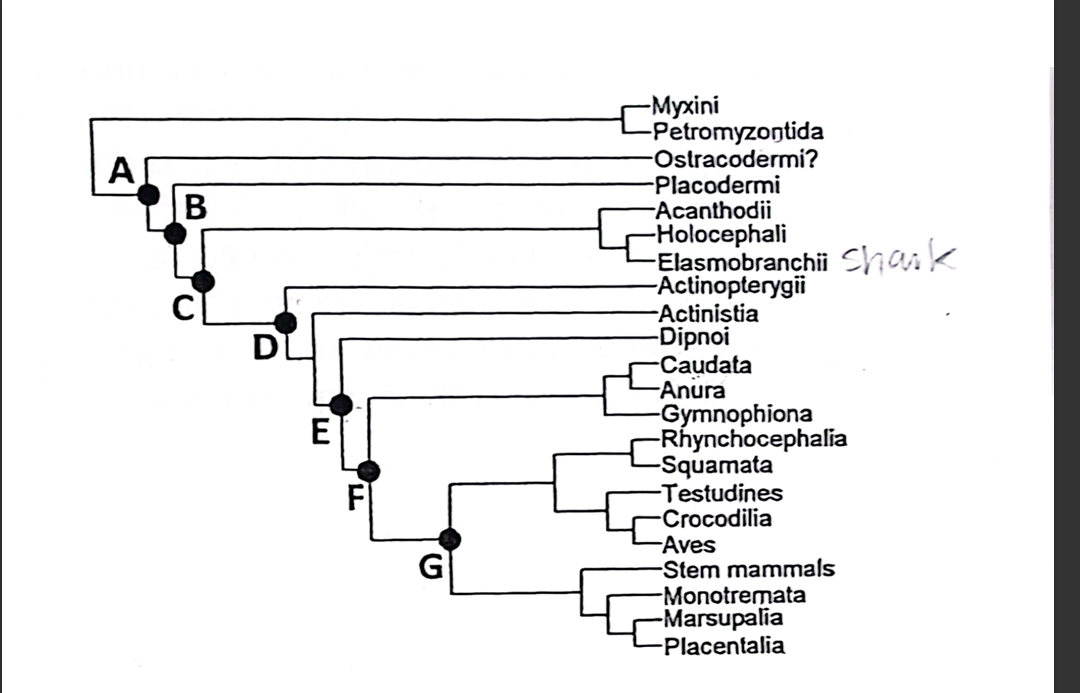
Identify the SPLITS defined by the presence or absence of an amnion
F
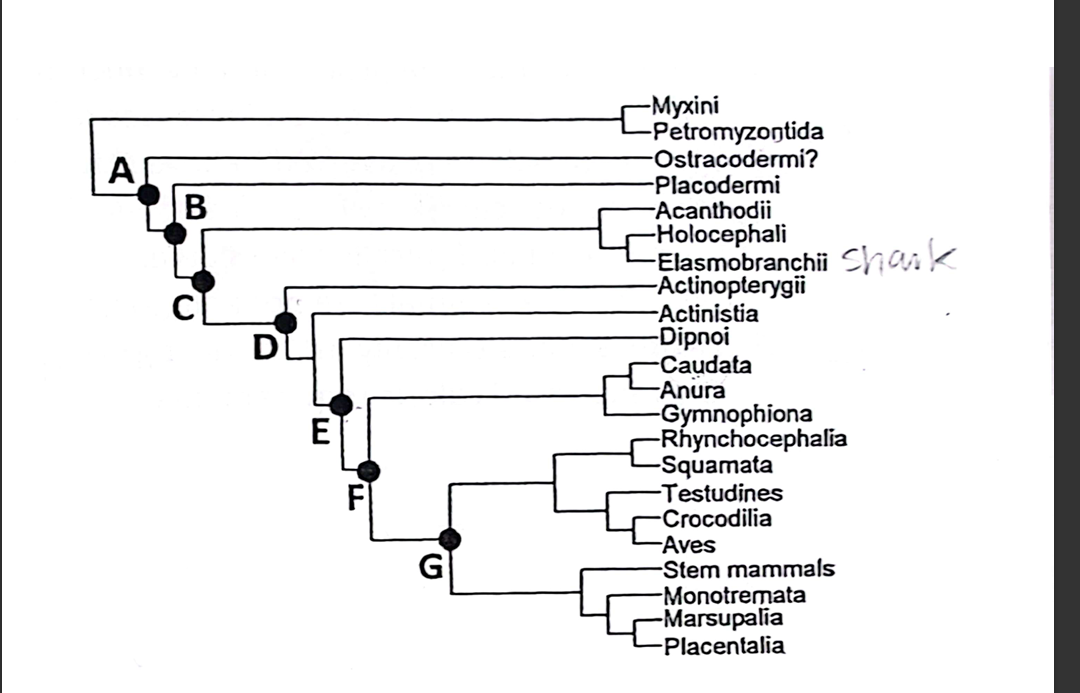
Identify the SPLITS defined by the presence or absence of four jointed, muscular limbs
E
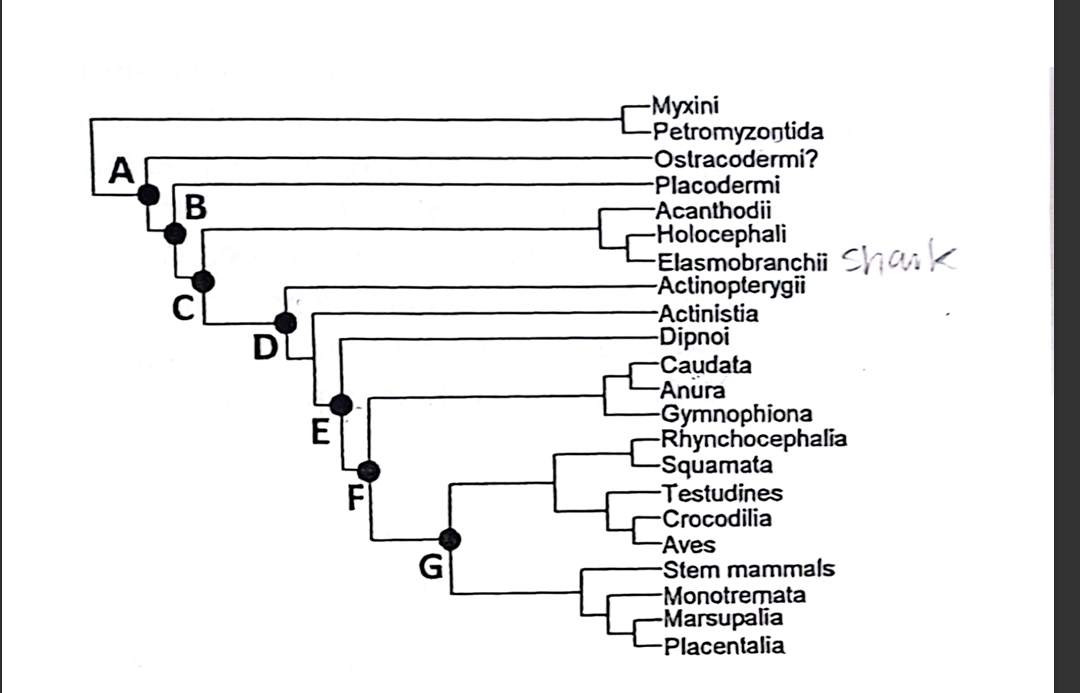
Identify the SPLITS defined by the presence or absence of a bony skeleton
C
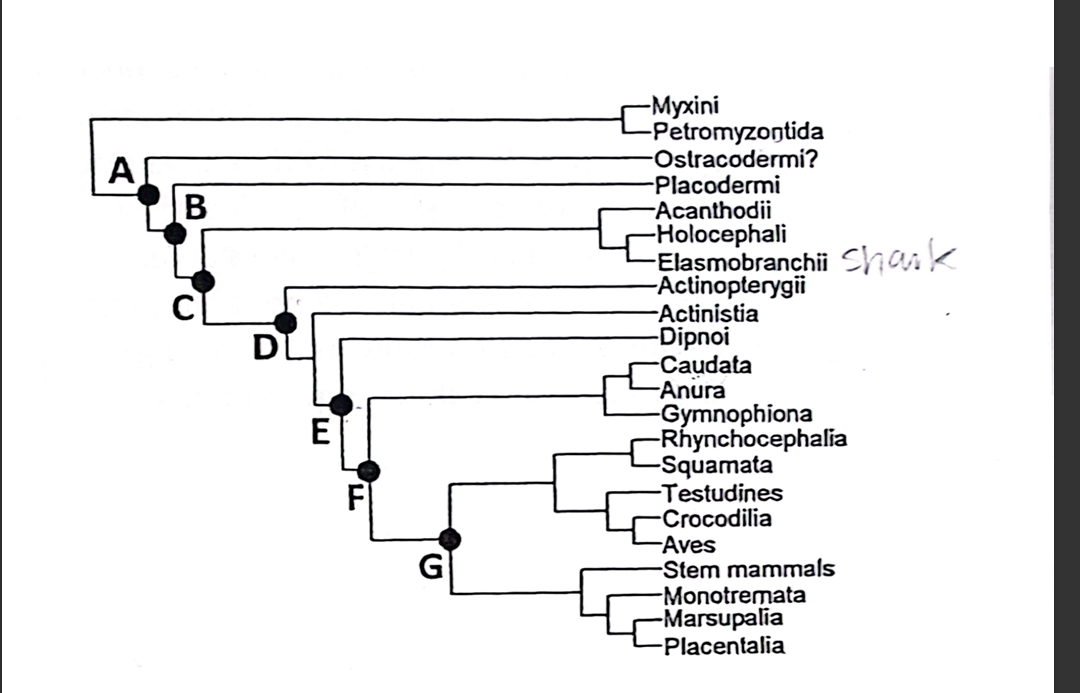
Identify the SPLITS defined by the presence or absence of a synapsid skull
G
T/F: Urochordates and hemichordates are not true chordates bc they do not possess all 5 chordate chara.s simultaneously at any point in their life cycle; instead, they are protochordates
F
Ambulacraria
Deuterostome sister clade to Chordata; incl Hemichordata and Echinodermata
Hemichordata
Protochordates w/ pharyngeal slits and postanal tail, but no notochord; incl acorn worms and pterobranchs
Cephalochordata
Basal chordates; incl lancelets and Amphioxus
Urochordata
Chordates w/ tough outer covering called a “tunic”; incl sea squirts and salps
T/F: Adaptations that inc SA usually act to minimize an exchange rate
F
What is the outer, protective layer of the epidermis found in 4pods but not fish?
stratum corneum
T/F: True horns consist of a bony core surrounded by a heavily keratinized epidermal sheath. True horns are found in the cattle and antelope family (Bovid) and never shed
T
T/F: Body mass is proportional to body vol., which inc much faster than body SA bc of the laws of geometry.
T
Zygote
Fertilized egg, consisting of a 1x cell
Gastrula
1st fully triploblast stage; gut starts to form
Morula
Solid ball of cells
Blastula
Hollow ball of cells, not yet triploblast
T/F: Many of the repeated units of the vert. body, such as the pharyngeal arches or the vertebrae, arise from segments of the embryo called coeloms
F
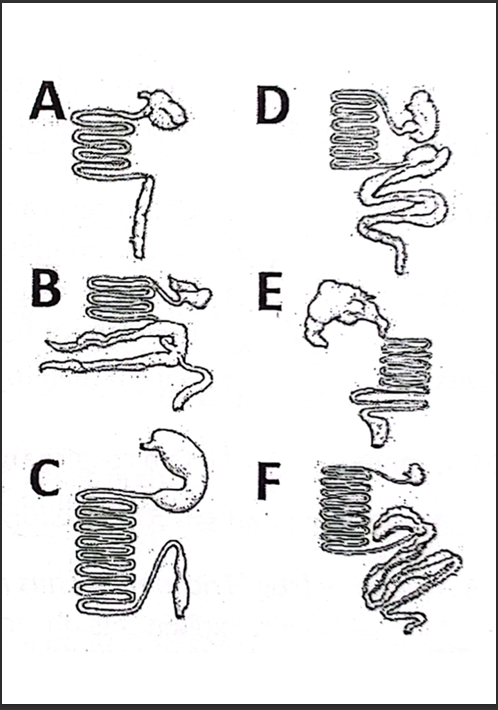
Which are the guts for a carnivore?
A & C